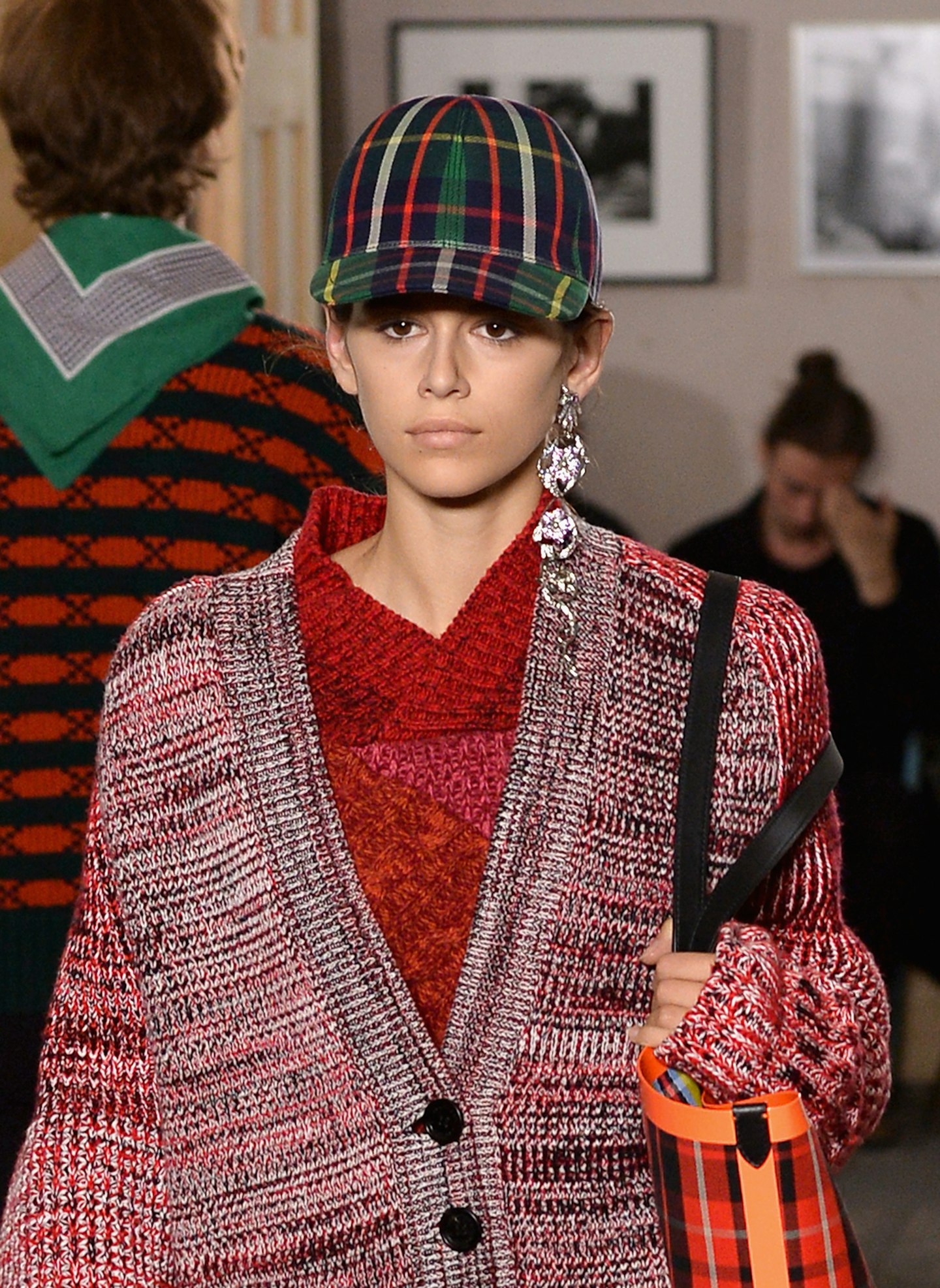Glance over the runway shots from September’s catwalks, and one of the biggest trends you’ll spot has nothing to do with the clothes on the models’ backs. Instead, it’s all about the shared genetic material, famous surnames and faces that trigger an uncanny sense of déja vu.
So far, this season has been a family affair. London Fashion Week’s finale saw Gigi Hadid walk alongside sister Bella and little bro Anwar in her TOMMYNOW extravaganza (a show in which two of the Jagger siblings, Lizzy and Georgia May, also appeared). Kaia Gerber, the 16-year-old daughter of original super Cindy Crawford, was the talk of New York, before crossing the Atlantic to make her Burberry debut alongside her equally beautiful older brother, Presley. There, they were watched by two members of the Primrose Hill set’s next generation, Iris Law (daughter of Jude) and Lennon Gallagher (son of Liam). Their respective sibling, Rafferty, and cousin, Anais, sat on the front row at TOMMYNOW, bringing the whole thing full circle.

Overwhelmed? That sample is far from exhaustive when you start to consider the assortment of Jenners, Baldwins, and Beckhams who have already been a designer’s guest of honour, or will doubtless make a catwalk appearance in Paris or Milan. It’s hardly new to suggest that fashion might have a nepotism problem, but this season it feels particularly egregious: the industry seems more obsessed with lineage than a Jane Austen mum anxious to make a good match for her fictional daughters. Of course, the aforementioned family members have all been blessed with prettier than average genes: they are all ‘model material,’ in one way or another. But ask yourself if they'd have had the same success at this stage in their fledgling careers without the door-opening advantages of a famous surname, and it’s tough to answer in the affirmative.
It’s easy to see why keeping it in the family has become such a popular booking tactic for shows and campaigns alike. Place an A-list daughter front and centre in your brand’s latest ad and you can count on a thousand ‘mini me’ headlines. Sibling success stories, too, can make for some uplifting PR: think of Bella Hadid supporting Gigi through the Anna Sui finale when the latter seemed to inexplicably lose a shoe on the runway. There’s also the small matter of social media: casting a Hadid ensures that images of a designer’s show will land in the Instagram feeds of tens of millions of young women. Casting two ups this figure yet further (even Anwar, the comparatively low-key third sibling, pulls in a cool 1.5 million).
In a way, we’re all complicit: if we weren’t so keen to bask in the reflected glory of Insta-girls like Gigi, Bella and Kendall, this social cachet wouldn’t be quite so all-powerful. Still, it’s hard not to feel a pang for the days when a model like Agyness Deyn could be launched from her chip shop Saturday job to catwalk ubiquity. Sure, those stories are still being made – Remington Williams was scouted in a Texas branch of Chipotle ten days before walking for Raf Simons alongside (you guessed it) Kaia Gerber – but they’ve become rarer (and won’t receive nearly as much air time or attention as a Kendall Jenner cameo). Instagram was supposed to democratise the industry, but we’ve been sold short: yes, a so-called ‘nobody’ can go viral, but it’s hard to translate that into long term success when so many runway slots are occupied by big name stunt castings.

Don’t get me wrong. To an extent, fashion – and fashion week in particular – is simply about aspiration and glamour, things which these girls offer in spades. Their ability to make a run-of-the-mill runway show feel like an event is second to none – yet that might be precisely because these ‘names’ are the only ones allowed to ascend to superstar status. Most damaging is the potential impact upon catwalk representation. Put simply, the dominance of the Insta-girls - all of whom conform to a single standard of beauty - seems to negate attempts at more diverse casting. Leomie Anderson recently made the news when she called out an un-named London designer for sending her away from a fitting on the basis of having already cast just one model of colour. It’s hard to imagine a similar designer - consciously or unconsciously – applying the same approach (ie. narrow-minded prejudice) when casting famous offspring. The industry’s problem with nepotism and its propensity for white-washing are two problems that are tangled up in each other.
When dynastic tendencies and inherited privilege have got the world in a chokehold, it would be comforting to see creative industries like fashion as places where meritocracy can flourish yet. Of course, it’s never been that simple or unambiguous. Whether we’re talking race, size or class, behind the scenes or on the catwalk, the industry is not always an inclusive place, and this fixation with fashion families just underlines it. It’s a more explicit version of the subtler biases and expectations that are at work behind the scenes.
WATCH: Burberry's Best Front Rows
